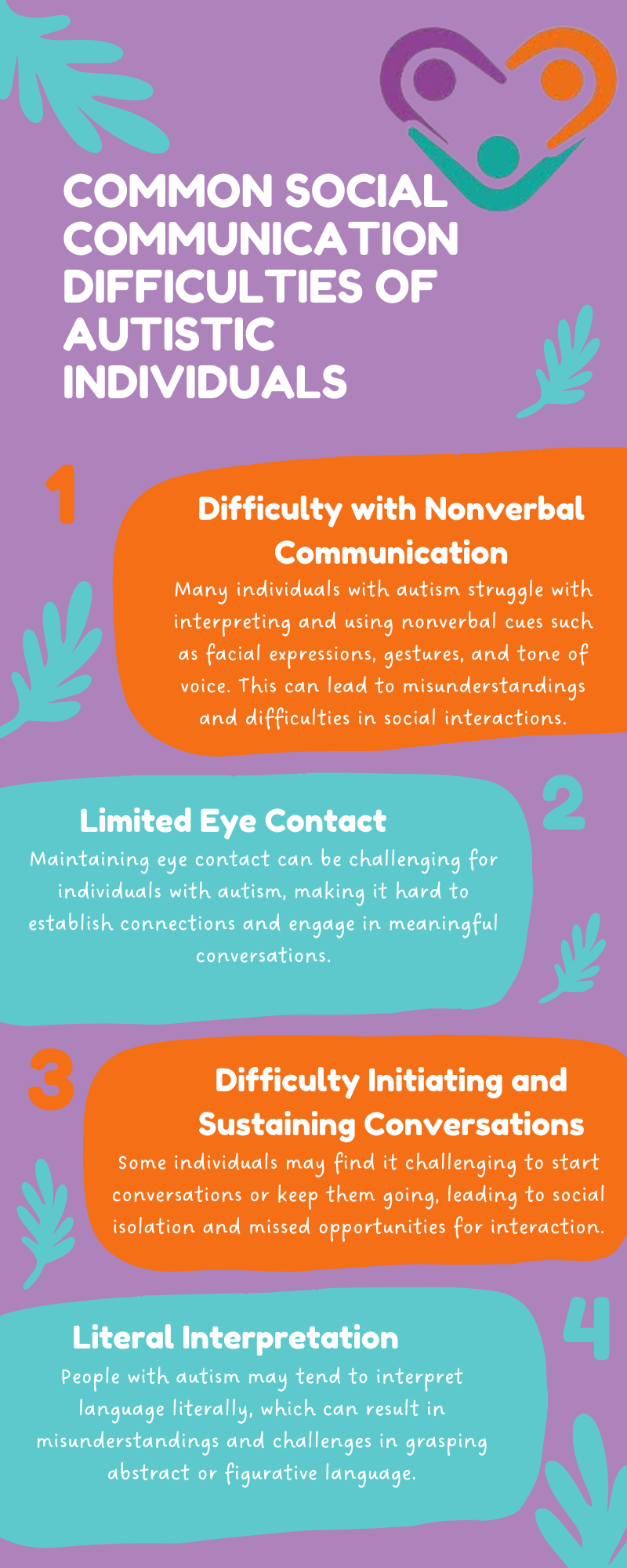Social communication can be one of the biggest challenges for those with autism, but with the right strategies, it can become easier and more natural. Whether it’s starting a conversation, understanding body language, or responding to others, improving these skills helps build better connections and a deeper sense of belonging. Using tools like functional analysis to assess social behavior and identify underlying challenges allows for personalized approaches that break down interactions into manageable steps, making progress achievable for everyone.
These strategies can empower individuals with autism to feel more confident in social settings, turning what may feel like a challenge into an opportunity to connect with others and thrive.
Importance of Social Communication for Autistic Individuals
Social communication plays a vital role in the overall well-being and quality of life of individuals with autism. Effective social communication skills enable individuals to form friendships, express their needs and emotions, and navigate social situations successfully.
Understanding the significance of social communication in the lives of individuals with autism allows caregivers, educators, and therapists to implement tailored strategies to support and enhance these crucial skills.
Collaborative efforts and ongoing learning are essential in creating inclusive environments that promote positive social interactions and growth for individuals on the autism spectrum.
Social Communication Challenges in Autism
Autistic individuals often face specific challenges related to social communication, which can significantly impact their daily interactions and relationships. Understanding these common difficulties and their effects is essential for implementing effective support strategies.
Some of the common difficulties they face are as follows:

Also, the social communication challenges faced by individuals with autism can have a profound impact on their daily interactions and relationships. These ninclude:
- Social Isolation: Difficulty in understanding social cues and norms can lead to social withdrawal and isolation.
- Misunderstandings: Challenges in nonverbal communication and interpreting social cues can result in misunderstandings and communication breakdowns.
- Limited Social Opportunities: Difficulties in initiating and maintaining conversations may limit opportunities for social engagement and relationship-building.
- Increased Stress: Struggling to navigate social situations can cause heightened stress and anxiety which can affect their overall well-being.
Recognizing these common difficulties and understanding their impact helps caregivers and autistic individuals work toward developing and implementing effective social communication strategies to enhance social interactions and overall quality of life.
Practical Strategies for Enhancing Social Communication
While focusing on enhancing social communication skills in individuals with autism, employing practical strategies can make a significant difference in their interactions with others.
Here, we discuss three key strategies which are as follows:
Visual Supports and Schedules
Visual supports, such as picture cards, charts, and schedules, can be powerful tools in aiding individuals with autism to comprehend and navigate social situations. These visual supports provide structure and predictability, helping to reduce anxiety and promote understanding of expectations.
Using visual schedules allows individuals to anticipate and prepare for upcoming activities or transitions, promoting smoother communication and reducing potential meltdowns.
Visual supports can also help in reinforcing verbal instructions and providing a visual cue to aid comprehension.
Social Stories and Scripts
Social stories and scripts are personalized narratives designed to explain social situations, behaviors, and expectations clearly and simply. These stories outline specific social scenarios and appropriate responses, helping individuals with autism better understand social cues and navigate social interactions effectively.
Through the help of social stories, individuals can learn and practice appropriate social behaviors in various contexts, enhancing their social communication skills and fostering positive social interactions.
Tailoring social stories to each individual’s preferences and needs can further increase their effectiveness in promoting social understanding.
Role-Playing and Social Skills Training
Role-playing and social skills training are hands-on approaches that offer opportunities for individuals with autism to practice and refine their social communication skills in a supportive environment.
Engaging in role-playing activities allows individuals to simulate real-life social situations and practice appropriate responses.
Social skills training focuses on teaching specific social behaviors, such as making eye contact, initiating conversations, and interpreting nonverbal cues. Through structured training sessions, individuals can improve their social communication abilities and gain confidence in interacting with others.

Collaboration and Continued Learning
Collaborating with therapists and educators who specialize in autism can significantly aid in the development of effective social communication strategies. These professionals have the expertise and training to assess individual needs, create customized intervention plans, and provide valuable support to both individuals with autism and their caregivers.
Also, staying informed about the latest research and strategies is essential for optimizing social communication outcomes.
Parents, caregivers, and individuals with autism can benefit from attending workshops, seminars, and webinars that focus on innovative approaches to social communication intervention.
Keeping abreast of emerging therapies and techniques allows caregivers to adapt their strategies based on the most current and evidence-based practices. By staying informed, caregivers can make informed decisions about the interventions that best suit the unique needs and preferences of individuals with autism.
Supporting the long-term social communication development of individuals with autism requires a commitment to continuous learning and growth. By fostering a collaborative environment that encourages open communication and knowledge sharing, caregivers can create a supportive framework for ongoing progress.
Establishing consistent routines, providing positive reinforcement, and creating sensory-friendly environments all contribute to the long-term success of social communication interventions.

Final Thoughts
Improving social communication for individuals with autism is a journey that takes time, patience, and understanding. By using tailored strategies, we can create a supportive environment where communication is more natural and less stressful. Whether it’s through visual aids, structured routines, or practicing social skills in real-life situations, each step brings growth and confidence.
With the right tools and support, social communication can become a bridge that connects individuals with the world around them. At Golden Care Therapy ABA, we are dedicated to providing personalized ABA therapy that enhances social communication skills and empowers individuals to thrive.
Our expert team is committed to delivering top-quality autism services in Georgia, New Jersey, Indiana, New York, and Florida. Reach out to us today to learn more about how we can support you and your loved ones. Contact us now, and let us help create meaningful progress in your journey.
Sources:



